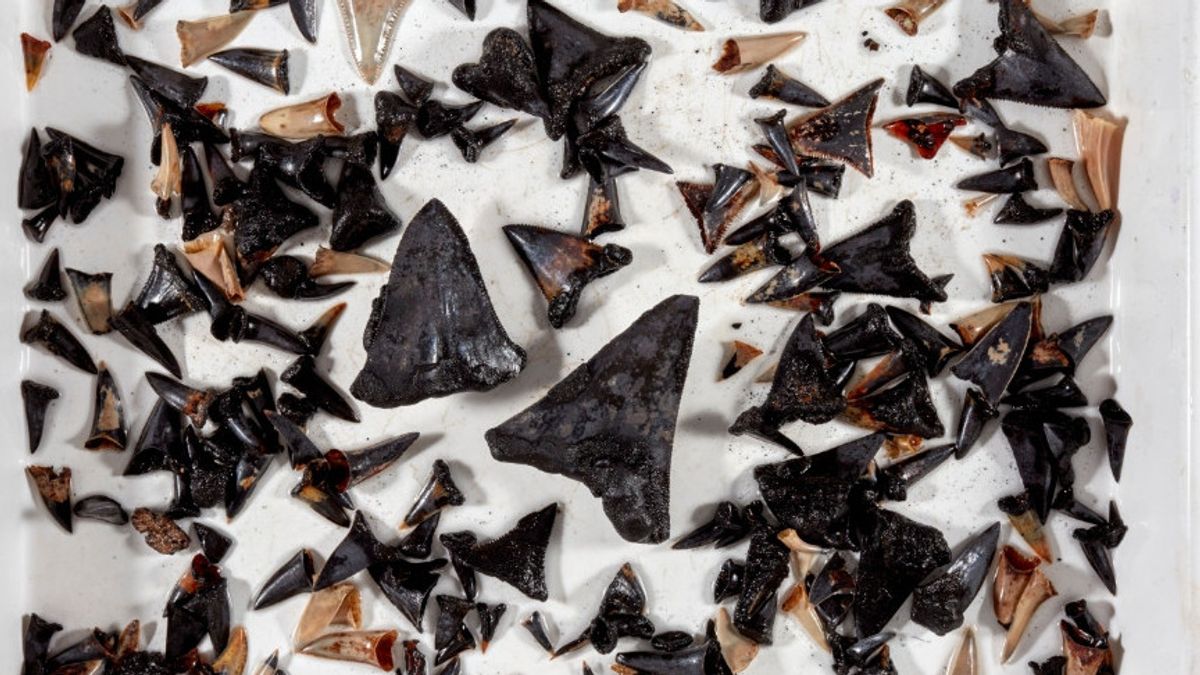JAKARTA - Australian scientists surprisingly found shark graves at a depth of more than 17,000 feet in the Indian Ocean. Interestingly, the graves contain 750 fossils of modern and ancient shark teeth.
The tomb was discovered by scientists aboard RV Investigator, a research vessel operated by Australia's national science agency, Commonwealth Scientific and Industrial Research Organization (CSIRO).
Initially, scientists thought they had pulled a net full of non-essential objects, but they collected many pointed teeth from various species, in the sea parks surrounding the Cocos Islands (Keeling).
This marine park covers an area of more than 180,000 square miles of the Indian Ocean, located west of Australia and south of Indonesia. More than 750 demollized teeth, representing various predatory species, were lifted from a depth of 5.4 kilometers.
Sharks, most of which are made of vulnerable bones, do not leave a preserved skeleton beautifully when they die. Generally all that's left is teeth and scales.
Scientists used the remains to understand the biodiversity of the oceans, past and now where fossils are basically a window into the past.
They also provide ways to understand the species species in the area in a more recent history. So these remains are the only clues to the history of these 450 million years of ancient animals on Earth.
West Australian Museum fish curator Glen Moore said the discovery contained an interesting mixture between modern and ancient shark body parts, including some of the megalodon's direct ancestors.
"These clouds evolved to megalodon, the largest of all sharks but died about 3.5 million years ago," Moore said in a statement.
The predatory animal remains were discovered during an investigation by two new marine parks, located 2,500 kilometers off Australia's west coast.
Previously, the CSIRO research vessel had started another trip, this time to the Gascoyne Sea Park off the coast of Western Australia, where it has also sailed across a new shark species.
"At the start of the cruise, we collected striking small-lined horn sharks. These species are unique in Australia, but have not been described and named. The specimens we collect will be of great importance to science as we will use them to describe the species," said CSIRO ichthyologist Will White.
Horn sharks tend to hide between rocks and seaweed on shallow seabed during the day, appearing at night for food.
They also lay out bottle openers. But this new species was found in waters with a depth of more than 150 meters, where seagrass-like covers were not available.
Scientists will continue to survey Gascoyne Sea Parks in the future, as well as nearby Carnarvon Laut Parks, until mid-December.
The English, Chinese, Japanese, Arabic, and French versions are automatically generated by the AI. So there may still be inaccuracies in translating, please always see Indonesian as our main language. (system supported by DigitalSiber.id)








